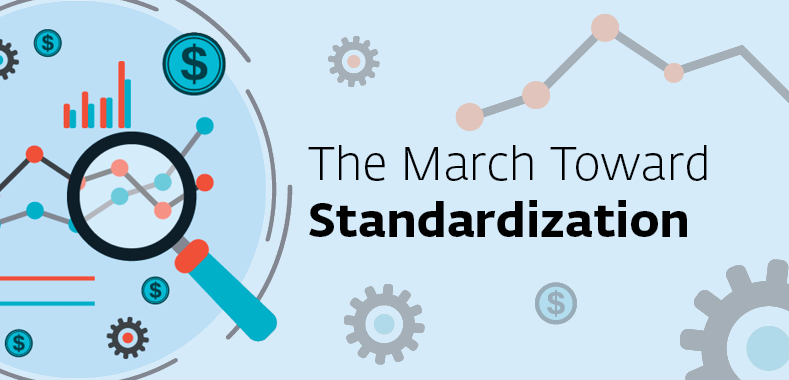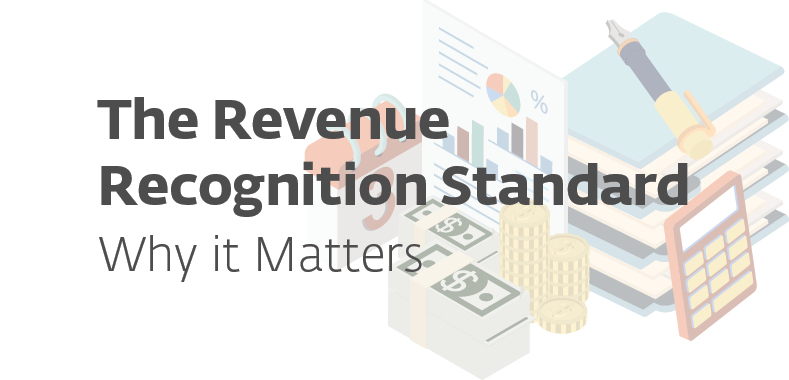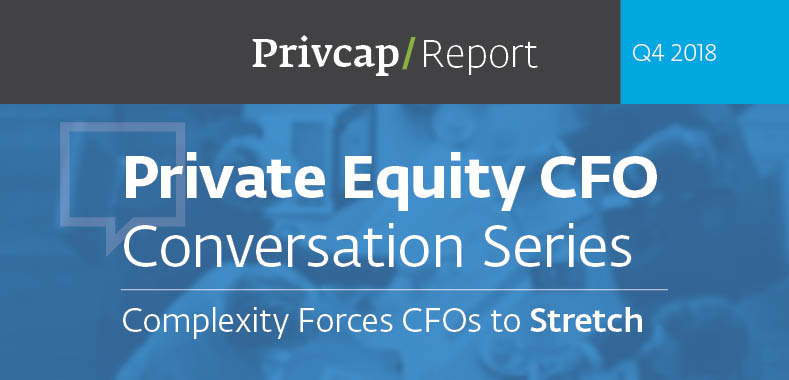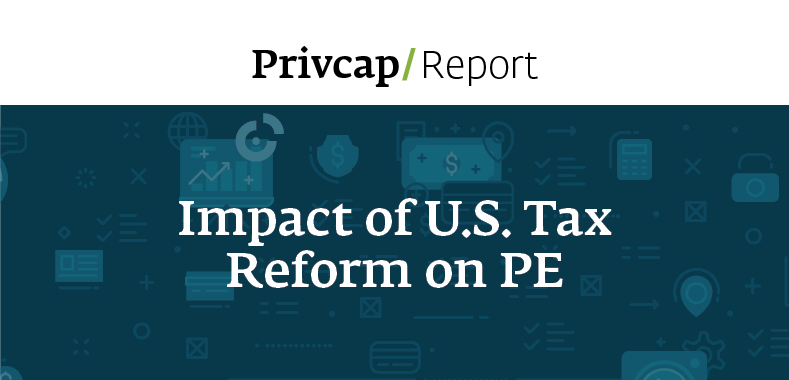On-Demand Webinar: New Reporting Rules
An expert discussion on how several new and imminent changes to accounting and valuation rules require immediate and proactive measures from CFOs and the finance team. Topics include the business valuation impacts resulting from the proposed AICPA Accounting and Valuation Guide for the Valuation of Portfolio Company investments for PE and VC funds and Other Investment Companies, changes to revenue recognition rules, new lease accounting standards, and more.
Transcript Download Transcript
Expert Webinar: Why You Need to Pay Attention to New Reporting Rules
David Snow, Privcap:
Good morning and welcome to a Privcap webinar. My name is David Snow, with Privcap. We have a fascinating topic today: it’s everything you need to know at a high level about some very important new rules and regulations that affect valuation and accounting for private equity.
We have a great team of experts for you today. I’m going to ask each of them to briefly introduce themselves, and then we can get going with the main part of the webinar. Perhaps we can start with Tim.
Timothy Byhre, RSM:
My name is Timothy Byhre. I’m a director in RSM’s evaluation services practice in Chicago, and I focus primarily on the valuation of private equity and venture capital investments. Happy to be here today.
Melissa Brady, RSM:
Hi, I’m Melissa Brady. I’m a director in our New York office. I focus primarily on portfolio fund valuation clients. Happy to be here.
Stacy Dow, RSM:
Good morning. My name is Stacy Dow. I lead our technical accounting consulting practice nationally for RSM. We are helping a number of both public and private companies right now implement new standards. We also help in many other technical accounting issues. I’m very happy to be joining today.
Snow: Great. Just a quick reminder to our audience that we will be leaving some time at the end of the webinar for questions, so please think of some good questions for our experts. If we can get to them, we absolutely will try to answer them. Also, this webinar will be available as a playback and also will be available as a transcript. I’d also like to let you know that the RSM team is going on essentially a tour of the nation and providing much more in-depth seminars for people who want to explore these topics in greater depth. Everyone who signed up for this webinar will be getting further information about where and when those special sessions are taking place.
Why don’t we get started with a really interesting new development for private equity, which is new AICPA guidelines? Timothy and Melissa are going to give us an overview of the most important impacts those will have on the private equity industry. Why don’t we get started with that?
Brady: Thank you, David. I think one of the key topics in the new exposure draft is the topic of calibration. We want to provide—this is an example straight from the guide. I think the best way to describe calibration is actually through a real-world example that the guide has published. Here’s an example where a company was acquired at 10 times EBITDA, or $500 million in appraised value. You’re benchmarking that against the public peers, so the median of the public comp is around eight times EBITDA. Clearly, there was a premium paid for the company and the premium was really accounting for much higher growth prospects of this business relative to the public peers.
We fast forward to the next measurement date six months from now, and we want to look at two things. We want to look at what has happened to the market movements, as well as what has happened to the fundamentals of the company performance. In this example, we can see that the median multiple has gone up from eight times to nine times. That is an increase of 11.25%. If we only looked at the market in a vacuum, and nothing else, then we would apply an 11.25 times multiple, which is really the 11.25% opted buy-in multiple.
However, that doesn’t take into effect what’s really going on with the company as well. Like I said, we’re looking at both market movements as well as company performance. In this example, in the eight, the reason why a 10.5 multiple is effectively applied is because most of the prospects, most of the developments, have already been done. A lot of growth has already been behind the business, so what we’re thinking about is, what is the future prospects going forward? Here we’re thinking about, will this company continue to outperform its peers at the same degree as it has done historically?
In this example it does not, so we’re offsetting that bump by taking into account both company performance and market performance. An important note here is that calibration really does work if you have a buy-in multiple that is reflective of a fair value. Meaning the original transaction was done at arm’s length.
Here are the key takeaways. The key takeaway is clearly when we deal with a lot of these fund investments, there are a lot of unobservable inputs. Calibration is a great tool to help refine the fundamental valuation inputs based on calibrating company performance and market performance over time, taking into account the buy-in.
One thing that we see a lot at our firm is a number of audit clients—they look at a median of the public peers, they slap on a 20% discount, and that’s their effective multiple. Calibration and the guide is trying to move away from these explicit discounts by fine-tuning those discounts within the multiple itself. By looking at the buy-in, you’re taking into account what that effective discount is already. This is a great tool to prevent these very subjective discounts. “DLOM” is discount for lack of marketability. “DLOC” is discount for lack of control. Absolutely, over time, the buy-in—if it’s been eight years ago, it’s going to be less effective, versus an investment that was done within three years. Most of this is actually covered in Chapter 10, as well as other chapters within the guide. It’s one of the most critical new concepts for funds to grasp. I’m going to turn it over to Tim now.
Byhre: Great. Thank you, Melissa. I’m going to discuss Chapter eight. Chapter eight reviews and focuses on the valuation of equity investments and complex capital structures. This chapter is generally more applicable to larger portfolio companies funded by private equity firms, and also early-stage venture capital entities. Before I get into this, I want to talk very briefly about what this section talks about and the purpose of this section.
What it does is it really formalizes and defines the approaches that we already use in practice. Second, it doesn’t say that any method is technically superior. It actually goes into detail to say the applicability of any methodology is really dependent upon the facts and circumstances of the particular investment, and the guide recognizes this trade-off in selecting one approach over another.
As a matter of fact, one of my coworkers pointed out that determined facts and circumstances is mentioned over 125 times in the guide.
Because it tries to formalize some of these approaches, it generally avoids and attempts to prohibit the rule-of-thumb approach that some of us have seen in the past for these types of investments. Lastly, because there’s so many different situations, and the time limit of this webcast prohibits us from getting into these, many examples are provided in the guide to illustrate how the approaches may be adapted for specific circumstances. I want to point out, for those of you listening at home, Appendix C, Case Studies nine and 10, are particularly instructive to review.
Before we go to complex capital structure, as opposed, let’s define that relative to a simple capital structure. A simple capital structure is defined by the guide as one that has a single primary class of equity. In a simply capital structure, the value of equity in the portfolio company is typically calculated using the current value method. Now, the guide calls it the current value method, but we all know it as a waterfall method.
For a simple capital structure, the guide allows the waterfall method. However, in a complex capital structure, which is defined by the guide as one involving multiple classes of equity, also including liquidity preferences and other rights, the guide suggests that the valuation of equity in these structures entails the determination of the facts and circumstances in order to determine whether the waterfall method can be used as the sole valuation methodology. In fact, one of the most frequently asked questions regarding the guide is, “Can we simply use the waterfall method?” The answer to this question continues to be “It depends.”
Let me talk quickly about the current value method. Regarding the current value method, or the waterfall method, the guide suggests it’s limited primarily to two types of circumstances. The first is when a liquidity event is imminent. The second is when the funds position in the portfolio company has both (a) seniority over the other classes of equity and (b) the investors who hold this class of equity have effective control over the timing of the exit.
This is a big point, so I want to point out (again, time limits me from going into much detail), for those who want more detail on the applicability of the waterfall method, paragraphs 8.75 to 8.77. There’s a question, 14.51, that provides really illustrative examples regarding the applicability of the waterfall method as the sole methodology.
With that said, and I think I said at the beginning that the guide does define several different approaches and it talks about three others. Let me talk about another methodology that it outlines, that’s called “scenario-based methods.” The guide outlines three of them. There are three different methods: simplified, relative and full scenario. I’ll put these pretty simply.
If there are two potential outcomes—such as an upside scenario where the company could exit at a value high enough that all classes of equity would convert—a downside scenario, meaning the company would exit at such a value that would provide no payoff to the existing classes it preferred. The guide refers to this as a simplified scenario analysis. We know this as sort of a binary scenario, where the upside scenario is high enough that everything converts, the downside scenario is there’s virtually no value.
Then, the second scenario there, the relative value scenario, discusses situations where there’s more than two potential outcomes. Unlike the simplified scenario analysis I just discussed, when there was virtually no value in the downside, the relative value scenario analysis, which the guide discusses, talks about how to treat a situation where there are more than two outcomes and some of the downside scenarios still have value. For example, let’s say you had a portfolio company where, as of the valuation date, you had an upside scenario, a 30% chance where all the classes of equity would convert, a middle scenario with a 40% chance where the most recent series would receive a percentage of their liquidation preference, but earlier rounds would receive no payoff.
Lastly, a downside scenario where literally no round receives any return. The relative scenario valuation analysis can be used to attempt to quantify or determine when the payoff to the earlier rounds may be lower than the most recent round. That’s what the guide talks about, so the guide goes into detail about that and calls that the “relative scenario analysis.”
Lastly, the guide describes a full scenario analysis, which we know as the PWERM. The PWERM could entail an array of potential outcomes, including an IPO, a merger, sale, dissolution, or continued operation of the company as a private company until a later exit date. As we know, the PWERM provides the estimation of future potential outcomes, then the present value under each and then provides a probability outcome as of the valuation date, which is consistent with market participant assumptions.
Those three scenarios I just described—the simplified, the relative and the full scenario—all fall under that second valuation methodology the guide describes as scenario-based methods.
The next valuation method is what we know as the option pricing method. Unlike the scenario-based methods that I just discussed in the prior slide, the scenario-based methods rely on estimates or projections of future exit value, then apply probabilities to the outcome. The option pricing method actually begins with the current equity value, and then estimates a range of future outcomes. The option pricing method is generally more complex, but it provides a more explicit valuation of various classes of rights and preferences. The details regarding the benefits and drawbacks of the option pricing method are far too detailed for us to go on this webcast, but Sections 850 give a really good summary of some details regarding the option pricing method.
Then, lastly, in the fourth scenario that it brings up is what they call the “hybrid method.” The hybrid method is—I don’t want to go into too much detail, but let’s say you had a company where you had a clear idea of a near-term exist, but if that near-term exit doesn’t happen, then the future is a bit muddled and cloudy as to what’s going to happen next.
An example of that would be if there is a high probability, let’s say an 80% probability of a IPO in nine months from the valuation date. However, if the IPO doesn’t go through, there’s no really clear plans about what they’re going to do next. In that case, a hybrid method would entail valuing the IPO under the explicit value, or the anticipated value of the IPO, then doing an option pricing model for that other scenario where you say maybe a three-year time to an unknown liquidity event and applying probabilities to both those scenarios could be used in such an example there. That’s the example of the hybrid method.
The next slide here, my final slide, gives an overall summary, a simple flowchart of how valuation professionals should be looking and funds should be looking at their investments.
To put it very simply—again, very high-level, channeling simple capital structures—what we call the “pro rata share” of the equity value or the cash-flow waterfall, is still appropriate. However, there’s multiple classes of equity. The guidance proposes the idea of different scenarios, which I’ve just discussed before, to take into account the right liquidity preferences of some of these securities in a more complicated capital structure. With that said, that is my brief summary of the valuation of equity interest and complex capital structures. I look forward to questions after Stacy presents.
Snow: Great, thanks very much. Let’s move on to another important change that’s happened that will affect the private equity industry—those are changes to revenue recognition rules. Stacy, can you talk to us about what the change was and where you see the biggest impacts?
Dow: Sure. This new revenue model is in the guidance as “ASC 606” (the title of the new revenue standard). What it does is it’s a new comprehensive revenue model for all companies and all industries, so it’s one single standard. It does go through a five-step model that’s outlined here. But really, the biggest changes are that there is more estimation and judgment in this standard about overall estimating a transaction price.
Under the standard transaction price would include both fixed consideration and also variable consideration. When we think about that, we’re thinking about things like maybe usage-based fees, milestone payments and things like that. But it’s also areas that would impact the transaction price in a negative away, like if the company makes concessions and things like that.
Why that’s important is that, in general, in a lot of these areas where you’re estimating the ultimate consideration that you’re going to get related to revenue, in many cases, you’ll be recognizing revenue earlier than you would under legacy GAAP.
So, for many private companies, if you were, for example, giving a concession or something like that, you would often have to wait to recognize revenue until you had a fixed fee and now, under this standard, you would estimate that in recognized revenue earlier. But what that can also do is that as you’re estimating, if you have changes in estimates that can affect revenue either positively or negatively as some of those things are resolved. So, there may be a bit more variability in the earnings process if you have a lot of variable consideration where you’re estimating amounts.
The other issue with this standard is that it affects how you allocate the transaction price to what we would have commonly referred to as elements in the arrangement. The standard has a slightly different term for that, but you’re going to allocate it based on an estimate of what you would sell each item for on a standalone basis and you’re going to allocate it under a relative allocation. What that means for most companies—and many private companies that are selling multiple elements or multiple products and services that they’re bundling together—is that ultimately they are going to allocate any discounts that they provide to all items in the arrangement on a proportional basis, which could affect obviously the recognition of different items that you may have been monitoring in the past. So, for a private equity groups, for example, if you were monitoring nonrecurring revenue versus recurring revenue in this allocation methodology changes some of that, some of those metrics may change going forward.
This standard, in terms of its impact for private companies, can affect the timing of revenue recognition and it can also affect the amount of revenue recognition to different items in the arrangement. So, certainly when we think about where this will be most applicable, it will be most applicable for private companies in industries like technology, for example, or life sciences, industries like that where you’re selling multiple elements, or maybe service organizations where there are multiple service offerings being delivered or companies with products and services. Any case where you have multiple element arrangements happening, the standard would be particularly impactful to those.
Stacy Dow: One area that also changed as a result of this standard is that there was a cost standard that was implemented at the same time as the revenue standard. The reason that is important to understand is that, in many cases, it requires certain costs to be capitalized, and one of those that I know has drawn a particular amount of attention is commissions. In many cases, when you are selling an arrangement where there’s a renewal rate, for example. So, if we talk about technology a bit—if you have a maintenance contract that renews and your commission rate is not the same on the renewal as it is on the original arrangement, meaning it might drop.
For example, let’s say that we charge a 10% commission on the original contract and we only pay a 5% commission on a maintenance renewal. The standard would say that that rate is not commensurate and you would have to capitalize those commissions and most likely amortize them over some estimate of the customer life. The reason that is important is that you’re not only affecting the nature and the timing of the revenue recognition in the amount, but you’re also impacting costs. So, EBITDA is obviously impacted as a result of this standard, from both a revenue perspective and a cost perspective.
Earlier in the presentation, Tim and Melissa obviously were talking about valuation issues and, as EBITDA changes for both public and private companies, those EBITDA metrics are going to change. It’s important that we’re mindful of what changes are happening both in public markets and private for your own companies when they talked a bit about collaboration, really reconciling those differences is going to be critically important as you think about how to value them. Like we’ve mentioned, this may be more impactful in certain business models than others. So, when you’re looking out to markets at comparables and in trying to even judge your own performance against them, it’s important to understand how this standard impacts your overall earning stream so that you can apply those valuation metrics appropriately.
On this next slide here, this just outlines some of what we talked about in terms of more of the industry hot points and how it affects certain industries more than others. Obviously, we talked a bit about those significant industries that I just went through: software and technology and things like that. Again, in many cases in these industries, you may be recognizing revenue a bit earlier than in the past if you were a hindered by things like not being able to affix the fee like you were either offering concessions or offering companies, clients or prospects future deliverables that you couldn’t value historically, or in the case of many on-premise technology providers, if you were limited because you could not in the past establish vendor-specific objective evidence, what we refer to as “BSO” for some undelivered items, you will not have that limitation anymore into this standard.
So, you will be required to estimate a standalone price for things like licenses and maintenance and services. All of those things that maybe historically you might have just been taking ratably over time. In those industries, the standard can be particularly impactful. For some of the other industries (consumer products, industrial products and things like that), some of the items we talked about earlier with respect to estimation and variable consideration can impact those entities so they will be required to estimate those at the time the transaction is occurring. For consumer product companies, there’s also the need to recognize the right of return asset for any returns that you get back. Again, there are different processes in place and estimations required with valuing that asset as well.
So, when we talk about this standard and what it means for private equity, we’ll talk about the changes to the allocation and the timing of revenue, what we went through earlier, EBITDA changes because of the timing of recognition and the cost capitalization requirements of valuation multiples, which we talked about. One thing to keep in mind, too, is that there are impacts to debt covenants.
Within private equity, as you are making acquisitions right now, as we get closer to the effective date of this standard, you’ll want to be thinking about how you structure your debt covenants and what changes there are coming forward with respect to the standard. And one thing you want to be particularly mindful of is, “how is EBITDA going to change once I implement this standard and how do I want to structure those debt covenants now to make sure that obviously I can comply?”
One thing we do encourage many of our private equity groups to think about during diligence right now to think about not only what the revenue recognition impacts and the queue of the impacts are from a current GAAP perspective, but also to think about what 606 will do to that business, so that you can obviously negotiate those covenants in a way that makes sense.
Again, you want to just think about technology changes. This is standard, in order to implement it, does require that for periods of time you need to have two sets of books. You can adopt this standard in a couple different ways, but you will need two sets of books, so to do that in an automated fashion, it may be technology that you want to think about and consider.
Snow: Great. Thank you, Stacy.
Let’s move on to the topic of new lease accounting standards. Then, we’ll have time for questions from the audience. We’re already starting to get some good questions from the audience and you can start sending in your questions now, but I’ll turn it back to Stacy.
Dow: Sure. Thank you, David.
The new leasing standards actually follow right on the heels of the revenue standards. So, for calendar-year private companies, you will be adopting the revenue standard effective January 1, 2019. The leasing standard is one year after that, so January 1, 2020, for calendar-year private companies. Public companies will have to adopt this lease standard on January 1, 2019. So, we will start to see changes in obviously public company financial statements coming as early as the first quarter of 2019.
The biggest applicability for this standard is on lessees. So, when you are leasing either equipment, real estate, any kind of leases, and the biggest change in the standard is that it’s requiring all leases, whether they are a capital or operating, to be on the balance sheet and to reflect a right of use asset associated with those leases. What that means is obviously that we’re going to gross up the balance sheet. The standard is attributable to the balance sheet more so than the income statement. We saw obviously, in the revenue standard, big impacts to the income statement there. Here, more of the impact is clearly going to be on the balance sheet where you are grossing up that right of use asset and presenting a lease liability as well.
The one challenge with the standard for many or all companies, whether they’re public or private, is just gathering all those leases and making sure you are reflecting your entire lease population. As we all know in the past, operating leases were more of a disclosure item. Now, all of those leases are going to have to be accumulated and presented on the balance sheet. Again, there are new rules requiring estimation in judgment in this standard, similar to what we talked about in the revenue standard as well. So, those judgments are going to have to be made on all of those leases in terms of lease classification, term of the lease and things like that, which are all changing as a result of this new standard.
When we talk about the income statement, as I said before, there’s not a lot of significant change there. There is potentially with finance leases—or what we have considered in the past to be a capital lease—some changes in interest expense just because of changes in the rules about interest rates and things like that, but not expected to be overly significant.
In the statement of cash-flows, there are going to be some changes there which are outlined here. I won’t get into too many of them, but there are some changes there just depending on what types of leases you have, but they’re outlined here.
When we talk about financial metrics associated with the new leasing standard—again, because this is primarily a balance sheet impact and primarily affecting lessees—you’re going to think about debt covenants, interest coverage ratios (again, because we said the interest might change a bit) and EBITDA/EBIT levels, things like that. But any of the balance-sheet ratios obviously could change, such as return on assets, debt-to-equity, liquidity ratios. Again, there are some differences with respect to foreign currency if you’re dealing internationally.
This standard leasing affects many of the industries that maybe were in the moderate or even low impact from a revenue recognition perspective because anyone with large leasing portfolios—and we think of that a lot in consumer products and retail restaurants, things like that where they have a number of real estate leases. Also, if you think about manufacturing, if you’re renting a lot of equipment, one thing to keep in mind is that this standard has also addressed the issue of embedded leases, so you have to be thoughtful about those two. What they mean by an “embedded lease” is any service contract that could involve the use of an asset. You have to evaluate that to see if that use of that asset qualifies actually as a lease and that would also be required to be capitalized, so any embedded lease arrangements.
This standard also gets into obviously a lot of detail, but again, another standard that will affect how companies are valued and viewed, just because of a major significant changes to the overall balance sheet. David, I’ll turn it back to you. I know that we have some questions.
Snow: Great. Thanks very much. That was a whirlwind tour through a number of important changes that are going to impact the way that private equity firms approach valuation and accounting. We do have a number of good questions coming in and I’ll throw the first one over to Melissa. The question is on calibration: “How should we tweak the initial relationship, whether it’s acquisition multiple or market multiple, in the subsequent period? Does this not add subjectivity to devaluation?”
Brady: Let me take a step back first. We’ve seen a lot of times where private equity firms were simply taking a strict median of the public peers and just slapping on a 30% discount. That approach is certainly not following best practices. That has a very high degree of subjectivity. First of all, it depends on the selection of your public peers, so that median can be skewed by your selected peer group. And number two is how do you support a 30% discount to that public set?
The calibration tool is just try to better finesse to make sure that the input is really reflecting a market participant expectation on the valuation of the business upon exit. So, as I mentioned, it’s very critical that the buying multiple represent fair value. Is this like an internal party transaction? It’s not arm’s length. Calibration will not work. Also, calibration will not work if there’s been a forced sale or a reemergence from a restructure or liquidation.
If those things occurred, please don’t use calibration. Now, I strongly encourage people to really understand what’s happening to market. Not just look at what had multiples done over time in a vacuum, but actually, to understand and read the research behind those public peers to understand what’s driving the change in the multiple. For example, we’ve seen in the fourth quarter of 2014, that clearly energy comps were increasing, right? But the reason is because EBITDA was getting depressed given oil prices. Just because EBITDA multiples have gone up doesn’t mean valuation has gone up. So, it’s really understanding what’s going on in the market, first of all.
In your public peers, you may have a comp that is more relevant. By all means, instead of using a median as a benchmark metric, you may want to apply more weight to that particular club that’s more relevant to your subject company. We all understand that when we’re valuing these level-three, highly illiquid middle-market companies, you’re just not going to have a wonderful peer group to look at in the marketplace. So, calibration is just a tool to look at what’s going on in the market as of the buying date. Then, we also strongly encourage you to document the qualitative factors that have changed or moved as well as the financial metrics that have changed and moved since the buying multiple. And looking at both company performance as well as market movements. Understanding both in-depth to fine-tune your selected multiple. I hope that helped.
Snow: Great. Thank you very much. We do have some more questions coming in, so let me read the next one. I would love to hear the answer. The question is, “In an acquisition, how would we measure prior-year EBITDA versus going forward in terms of consistent application in the M&A transaction? Does AICPA require a restatement of prior-year EBITDA?” Comparing apples and oranges. Who’d like to take that?
Dow: David, I can start. This is Stacy. I can start and then, Melissa, feel free to chime in. I’m assuming that the issue is with respect to the new standards requiring restatement of prior years. I guess I’ll address it from there first—the 606, the revenue standard, there’s an option for companies to adopt that standard either by restating prior-year financials or just moving forward. So, as of the effective date, then moving forward and adjusting current financials. Of the SCC registrants that disclose—there were roughly 1,500 that were disclosed, I believe, somewhere around there that were using the modified method, which means they are just restating the current period. So, they’re presenting basically non-comparative financial statements in the year of adoption, versus those that did restatement. So, about 500 that did at the full restatement where they’re doing comparatives.
The question about how you really measure is incredibly important because, for those companies that obviously went back and restated prior to your financials, you’re going to have trends under the new standard and you’re going to be able to measure that. But, for the vast majority of companies that adopted using a modified approach, you’re only going to be getting information from a 606 perspective on a quarterly basis. Now, I know these companies are required to disclose in their footnotes in the year of adoption what revenue and costs would have been under legacy gap, in order for readers to form a comparison of those financial statements. But, the 606 metrics are only going to be presented each quarter. So, it’s incredibly important that you really are analyzing these businesses on a historical basis and as quarterly results are coming out to try to figure out what are the impacts to EBITDA and how can I think about that?
I think that’s what the question addressed, but there are differences in terms of adoption from a revenue recognition perspective where public companies are effective on that standard right now. A calendar-year public company’s, at any rate. That’s important to be mindful of—that there will be difficulty in making those EBITDA comparisons as a result of some companies adopting this standard only on a prospective basis.
Snow: Great. We have time for a few more questions, but I do want to remind the audience that this entire program will be available later. The slides will be available and you’ll be able to meet the RSM team in person as they go around the country giving in-depth presentations. We’ll give you all the information you need about that.
Here’s a question that can possibly go to Timothy. It says, “At what point in the future, if any, does the use of calibration become irrelevant?”
Byhre: That’s a very good question. While I probably could answer it, I think Melissa is probably closer to the calibration section of the guidance here. I hate to turn it over to Melissa, but I think she could probably get the best answer of that.
Brady: Sure. Another point about calibration that I want to readdress is, especially in the venture capital space, if there’s been a change in the pivot model. For example, the business model has changed since the original transaction—calibration will no longer work because it’s a different model. So, the original transaction is no longer relevant. The guidance actually suggests that, even if there has been a long lead time or a long time since the original transaction, that calibration can still be useful.
There’s no set time—such as, after 10 years you can’t use calibration anymore. The guidance actually states, even if it’s been while, it still encourages the use of calibration. Just be mindful that, yes, there are changes in the market. There are changes in the stage of development of the business, so it does make it more challenging. There’s just no set guidance and, if there’s been a long lead time, we would just encourage that there’s other ample support and analysis done to further solidify the support behind your valuation input.
Snow: Here’s a great question. Then, maybe we’ll take one more before we’re going to have to wrap things up. I’ll read it out loud and I’ll let one of our experts chime in. “Have you seen significant changes to investment valuation policies as a result of these gaps changes? If not, do you expect funds to update valuation policies?”
Brady: I’ll take a stab at that. Right now, currently, no. Because if the draft just came out this year, we certainly do expect valuation policies to be refreshed as it should periodically. So, it’s funds do get smarter and this guide provides such great tools. We would encourage all funds to revisit their policies and refresh, to reflect best practices.
Snow: Great. Here’s a question and it’ll probably have to be our last one. It says, “The guide specifically addresses private equity and venture capital firms. Does this guide apply to the financial statements of employee stock-ownership plan financial statements?”
Byhre: This is Tim. I’ll take that one. Unfortunately, I can’t give a definitive answer. What I can say to that question is that the employee stock-ownership plan (or ESOP) doesn’t show up anywhere in the guidance. This question highlights how many different topics the guidance comments on and it discusses that—I can’t say for sure that it covers that because it doesn’t show up anywhere. But, at those terms—I don’t recall in my discussion or maybe Stacy or Melissa have any ideas on this. I don’t remember the guidance ever talking about ESOP. I think we know who asked that question and we’ll look into that more after the call here. But, at a first take or a first glance on this, because I did a little research on this a while back, I didn’t see anything about how it referred to the financial statements for ESOPs. Sorry for a sort of half answer to that question, but that’s the best I can do.
Snow: Great. This has been a large topic and we’ve had a finite amount of time to address the three main areas that we’ve had to address. But I think our experts did an excellent job at getting a high-level overview and certainly have made the case that, if you are in the business of private equity and especially in the business evaluation and accounting and private equity, you really need to pay attention to these. The RSM team is here at your service to help you navigate these times we find ourselves in. Once again, thank you to everyone for attending this webinar. You’ll be able to get a transcript of it later or you can download it as a podcast, but for now, we’re going to say thank you and goodbye.












